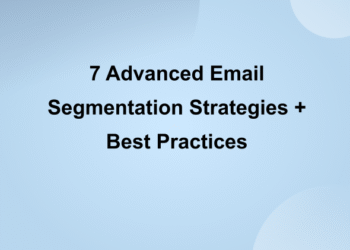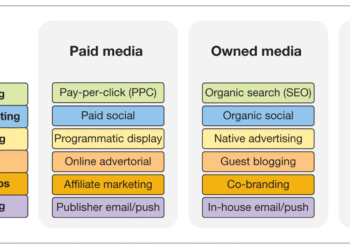If you’re here, you’re likely looking for a comparison of Perplexity and Claude that goes beyond a generic overview.
The lines between a “smart chatbot” and a full-fledged AI assistant software are blurring fast. Your choice of platform will impact your workflows, your data handling, and potentially even your customer experience. This comparison will help you cut through the noise and make a call that’s both strategic and scalable.
As someone who has explored both tools in depth, I have put them head-to-head across real-world use cases.
Our results indicate that Perplexity is a more suitable option for tasks that are fact-based and require real-time web research. Claude is a better option for creative tasks and writing-based work.
Let this comparison save you time, effort, and a lot of trial and error when choosing between the two popular chatbots.
Perplexity vs. Claude at a glance
Below is an overview of how the two software programs compare in real tests.
| Feature | Perplexity | Claude |
| G2 star rating | 4.75/5 | 4.4/5 |
| Free vs. paid versions | The free version uses Perplexity’s own AI for quick answers and web searches. Pro subscription adds powerful models like GPT-4.1, Claude 4.0 Sonnet, and unlimited deep searches. | The free version gives access to limited features. The Pro plan unlocks research and connection with Google Workspace apps. |
| Best for | Real-time web search with source citations, fast factual answers, and multi-step research across the internet. It’s suitable for students, researchers, and anyone needing up-to-date info with evidence. | Excels at coding assistance and analyzing long documents due to its large context window. Best suited for professionals and developers who need an AI collaborator. |
| Tone and conversation style | Clear, concise, utility-focused answers. | Conversational and empathetic tone; feels more like chatting with a colleague. |
| Multimodal support | Primarily text-based with a focus on Q&A. Offers some image generation via integrations and can perform optical character recognition (OCR) on images for text, but this is not a core strength. | Supports text input natively. It can interpret structured data (tables/code) in text form very well. Lacks native image or audio understanding. |
| Coding and debugging | Can answer coding questions and provide snippets, especially using GPT-4 in Pro, and often cites sources, like StackOverflow, for code solutions. Suitable for quick fixes and explanations. | Handles debugging and large codebases without losing context, and even supports tool use via API for executing code. |
| Integrations and API | Used mainly via its app/extension. Some enterprise features like shared threads exist, but API flexibility is limited (G2 score 6.9/10).
Designed as a ready-to-use product rather than a developer platform. |
Claude is offered as a service for apps. High API flexibility (8.5/10 on G2) allows it to integrate into custom solutions.
Commonly used via partner apps or in-company systems rather than a standalone public app. |
| Pricing | The basic version is free to use. The Pro plan and the Max plan cost $20/month and $200/month, respectively. | Free to use the basic version. The Pro plan starts at $17/month. The Max plan starts at $100 per month. |
*Both Perplexity and Claude are evolving quickly. This comparison is primarily based on what the two tools offer on Perplexity’s free version and Claude’s free plan (Claude Sonnet 4) as of July 2025.
Perplexity vs. Claude: What’s different and what’s not?
After spending a lot of time with these two AI chatbots, I wanted to pinpoint where they diverge and where they overlap. Here’s my take on the main differences and similarities between Perplexity and Claude.
What are the key differences between Perplexity and Claude
Below are some primary differences between Perplexity and Claude.
- Information access: Perplexity is suitable for real-time web search. It automatically pulls up-to-date information from the internet and provides direct source citations for every answer, which builds a lot of trust. This makes it excellent for research. Claude, in contrast, does not browse the web by default. It relies on its trained knowledge, which, while extensive, can become outdated, and on whatever the user provides. So if you ask about a breaking news story or recent statistics, Claude may not know the answer, whereas Perplexity likely will, complete with a cited source.
- Context management: Claude feels more human-like and engaging in conversation. Users on G2 consistently rate Claude higher for natural conversation (9.5/10 vs Perplexity’s 8.6). It tends to remember context within a long chat better as well. On G2, Claude scored 8.7 in context management vs 7.9 for Perplexity. If you refer back to something said 10 messages ago, Claude is less likely to get confused. Perplexity’s style is more utilitarian: it gives concise answers and then often suggests a relevant follow-up question rather than carrying on a free-flowing chat by itself. It maintains context to a degree, especially when you’re logged in, as it can remember your thread. However, it’s more focused on answering the current query and guiding you to the next one.
- AI models: Claude and Perplexity differ significantly in the AI models powering their platforms. Claude, developed by Anthropic, uses its own proprietary model known as Claude 3, which emphasizes safety, context handling, and helpfulness. On the other hand, Perplexity operates primarily on OpenAI’s GPT-4, a widely recognized model known for its advanced language capabilities, accurate reasoning, and extensive knowledge base.
- Pricing: Claude offers a structured tier system, comprising a free tier, a mid-level Pro plan ideal for individual productivity, and a high-capacity Max plan. Pricing ranges from $0 to $100/month, depending on usage and access requirements. Perplexity’s free tier is useful for casual users, while the Pro plan and Max plan cost $20/month and $200/month.
- Integrations: Perplexity is a self-contained product. You go to the Perplexity app or browser extension, ask your questions, and get answers. It doesn’t deeply integrate with other tools. Claude, in contrast, is more of a platform that others integrate. Anthropic provides Claude via an API, and companies plug it into their products. For example, you might use Claude inside a messaging app or your company’s software. G2 users give Claude a higher score for API flexibility (8.5 vs Perplexity’s 6.9), indicating that developers find Claude much easier to hook into custom workflows.
- Support and community: According to G2 reviews, users find Perplexity’s support to be more responsive and helpful. Perplexity scored 8.2/10 in quality of support vs Claude’s 7.5. This could be due to Perplexity being a smaller, consumer-facing company that directly engages its user community. They have an active Discord and frequent updates.
What are the key similarities between Perplexity and Claude?
Despite their differences in design philosophy, Perplexity and Claude have a lot in common as AI chatbots.
- Natural language Q&A: Both Claude and Perplexity are built to answer questions and have conversations in plain language. They both understand a user’s question and respond with a coherent, contextually relevant answer.
- Content summarization: Both platforms generate a wide range of text content and summarize information. Perplexity tends to lean on its integrated models, like GPT-4 4 to produce well-structured, fact-checked write-ups, often citing sources for factual text. Claude, on its own, can produce very fluent and structured text from scratch. Claude might give a more flowing narrative, while Perplexity gives a concise, reference-backed draft.
- Knowledge and accuracy: While their methods differ, both give accurate, factual answers to minimize hallucinations. According to G2’s feature ratings, Content Accuracy is a highly rated feature for both, with Perplexity at 86% and Claude at 84% satisfaction. Each has mechanisms to ground their answers: Perplexity through sources, and Claude through extensive training and alignment. In a G2 analysis of AI hallucinations, Claude and Perplexity both had relatively fewer user complaints about incorrect information compared to some competitors.
How I compared Claude and Perplexity: My tasks and evaluation criteria
To keep things fair and thorough, I tested both Claude and Perplexity (free versions) on a series of real-world tasks. I used Claude’s latest model (Claude Sonnet 4) and Perplexity free plan. My test included the following tasks:
- Text-based content creation. I asked each to write a paragraph or two. I evaluated the fluency, creativity, and correctness of their writing.
- Summarization and deep research. I gave them a long article to summarize and asked multi-part questions that required synthesizing information. This tested their ability to handle large contexts and produce accurate, sourced answers.
- Coding tasks. I tried a few programming-related prompts, such as asking for a sample code snippet. I looked at the accuracy of the code and its ability to handle corrections.
- Conversational Q&A. I engaged in a free-form conversation with each AI, asking a sequence of open-ended questions to see how well they maintain context and simulate a natural conversation over multiple turns.
For each of these tasks, I paid attention to a few key criteria:
- Accuracy: Are the answers correct and trustworthy?
- Creativity: Are the responses unique and engaging?
- Depth: Do they provide detailed, insightful answers vs. superficial ones?
- Clarity: Is the answer well-structured and easy to understand?
- Efficiency: How fast and directly did they get to a good answer, and did I have to poke and prod to get something useful?
Let me share what I found and how those findings line up with what real users on G2 have reported about Perplexity and Claude.
Perplexity vs. Claude: How they performed in my tests
Below is an overview of how Perplexity and Claude performed in my evaluation of the two AI chatbots.
Conversational ability
To test the conversational ability of both AI chatbots, I started a discussion about planning a trip to Japan, and asked a series of questions using prompts like, “What’s the food like?” and “What temples to visit?”
In a back-and-forth conversation, Claude immediately felt more “chatty” and context-aware. When I asked Claude a question, and then a follow-up that referred to something we discussed earlier, Claude consistently remembered the context.

After several turns while talking about flights, food, and culture, I asked, “Oh, what was that temple you mentioned before?” Claude knew I was referring to a temple that it recommended earlier and responded correctly. Based on the tone, I found Claude’s style to be more engaging. It tends to use an affable tone, which makes the conversation feel friendly.
Perplexity, in a similar scenario, was more helpful but straightforward. It often responded to the last query without seamlessly weaving in older context unless I explicitly mentioned it. This aligns with G2 user ratings, where Claude scored 8.7/10 on context management vs Perplexity’s 7.9.
Perplexity’s tone was polite and clear, and more precise than Claude’s. For straightforward Q&A-style dialogues, it’s highly efficient. Some answers from Claude felt generalized, but Perplexity gave precise outputs. It’s like a very knowledgeable assistant. Interestingly, Perplexity often suggests follow-up questions after answering. I found this feature extremely useful for digging deeper into topics.

Personally, I liked the overall output of Perplexity better than Claude’s since it was not generalized (very precise) and suggested a way to dig deeper without having to come up with the right questions by myself. This is the assistance I would prefer when I’m using an AI chatbot, rather than having something nice to read in an engaging tone.
Winner: Perplexity
Writing and creativity
In this task, I asked both Claude and Perplexity to write a few verses of a poem about AI and nature. I wanted to see which tool addresses my query more creatively in terms of figurative language, rhyme, tone, and diction.

Claude produced a lovely, metaphor-rich poem that had a clear theme and even a bit of rhyme. For example, “Electric neurons spark and fire, while morning few on copper wire.” I love the tonality that Claude set for the poem; it captured both AI and nature in a way that felt vivid and intentional.

Perplexity’s attempt was much more basic. It delivered a poem, but the imagery felt a little complex. For example, “binary stars and wildflower hues, a fusion born from ancient truth” might have a deeper meaning, but it didn’t feel as obvious to me or as simple to comprehend.
For structured content like an article or report writing, both are useful but in different ways. I had them each write a paragraph describing the biggest cybersecurity threat to small businesses.
Claude’s paragraph came out narrative and engaging, almost like an opener, hooking the reader with a scenario. Perplexity’s paragraph was straightforward: it listed a couple of key points for data protection and financial risk with clarity and even cited statistics about cyberattacks on small businesses.
If I were writing a fact-based piece, I’d love those citations handy. However, if the task is more on the side of narrative or copywriting (like drafting a personal blog or marketing tagline), I’d lean on Claude.
Winner: Tie; Claude for creative writing, Perplexity for report writing
Coding and technical assistance
Going into this test, I had a hunch Claude would outperform in coding, and that turned out to be true by a significant margin. I gave both a couple of real programming tasks, and the results were pretty telling.
One was a debugging question: I provided them with a short Python function that had a bug and asked for help.
I was impressed seeing Perplexity’s response. It was to the point, with explanation, and a solution to fix it.

Claude performed equally well and returned a similar output while explaining the error and suggesting alternative ways to fix it. Here’s the response I received from Claude:

However, the difference became clearer in the following coding test, where I asked the tools to write a function to generate a random password in JavaScript.
Claude wrote a nice function, explained each step in comments, and even mentioned a best practice like including a mix of characters.

Perplexity’s answer gave a code snippet too; however, there was limited in-line explanation within the output. Here’s what I got with Perplexity:

The explanation helps a developer justify every line of code, making it valuable in complex tasks. This realization led me to conclude that Claude is currently better than Perplexity when it comes to coding or offering technical support.
Winner: Claude
Research and information retrieval
In my line of work, up-to-date research holds a lot of weight. Curious to know which tool would perform better, I asked both AI tools the same question: What are the latest trends in renewable energy adoption in 2025?
Perplexity blew me away and differentiated itself. It was dramatically more useful in research and used more sources or research in the local geographic area.
Perplexity automatically took data about renewable energy adoption based on the country I was querying. For academic or report-style research, the value of Perplexity’s approach is immense. It lets you access quality papers, relevant sources listed, and even videos suggested for whatever you wanna search.
On the other hand, here’s what I got from Claude:
Claude gave a more generalized overview based on global data. The answers were more generic compared to Perplexity, without any precise details about local data on renewable energy trends.
I liked Perplexity’s output better since I didn’t have to over-specify to get the output I needed. Claude felt more static when it came to research.
Winner: Perplexity
Here’s an overview of my tests:
| Feature | Winner | Why it won |
| Conversational ability | Perplexity 🏆 | For precision and suggested follow-ups in a conversation. |
| Writing and creativity | Tie | Perplexity is good for fact-checking, while Claude is suitable for copywriting. |
| Coding and technical assistance | Claude 🏆 | Claude’s inline explanation while writing code allows developers to contextualize every line. |
| Research | Perplexity 🏆 | While both tools offer citations, Perplexity was better at personalizing research compared to Claude. |
Perplexity vs. Claude: Key insights based on G2 Data
The qualitative experience I described above echoes many of the patterns we see in G2’s ratings and review comments. Here are some key insights drawn directly from G2 data:
Satisfaction ratings
- Perplexity has a decent ease of use (94%) and ease of setup (96%) rating.
- Claude excels in ease of use (94%), ease of setup (94%), and ease of doing business(94%).
Industries represented
- Perplexity dominates marketing and advertising, computer software, IT and services, education management, and broadcast media.
- Claude has a strong presence in marketing and advertising, computer software, IT and services, consulting, and financial services.
Highest-rated features
- Perplexity excels in complex query handling (87%), content accuracy (87%), and reliability (87%).
- Claude stands out for natural conversation (93%), creativity (90%), and understanding (89%).
Lowest-rated features
- Perplexity struggles with API flexibility (75%), software integration (78%), and error learning (80%).
- Claude struggles with error learning (78%), software integration (81%), and API flexibility (82%).
Perplexity vs. Claude: Frequently asked questions (FAQs)
Let’s address a few frequently asked questions that potential users or buyers often have when comparing Perplexity and Claude:
Q1. Which platform offers more accurate and up-to-date responses: Perplexity or Claude?
Perplexity will generally give you more up-to-date responses because it can search the web in real time. If your question is about current events, recent statistics, or anything where the information changes daily, Perplexity is a better choice. It will fetch the latest info and even provide citations for verification.
Q2. Are Perplexity and Claude completely free?
Both Perplexity and Claude offer a free version. These free versions have limited usage of specific features. Perplexity lets you use deep research on its free plan. But Claude needs an upgrade to the Pro version to access the deep research capabilities.
Q3. Which one should I choose: Perplexity or Claude?
The choice ultimately depends on what you plan to use the AI for. Here’s a quick guide:
- Choose Perplexity if your primary need is research, quick information, and verified answers.
- Choose Claude if you value rich conversation, creativity, and advanced assistance. Claude is like an AI colleague or assistant that you can brainstorm with, write with, and even code with.
These tools complement each other well. Based on the use case and task, you can choose the best fit.
Perplexity vs. Claude: My final verdict
I’m a writer by profession. Both fact-checking and writing style and tone are equally important for my work. Given a choice, I’d rely on Perplexity to perform my secondary research, letting it scan the breadth of the Internet to collect relevant data and examples that I can use in my work.
For narratives, rewriting, summarization, and finding tone varieties, Claude would be a preferable choice.
Ultimately, it depends on what kind of support we need from the AI chatbot. The choice would stem from the individual use case.
Exploring chatbots? Go through the detailed comparison of ChatGPT vs. Claude.

















